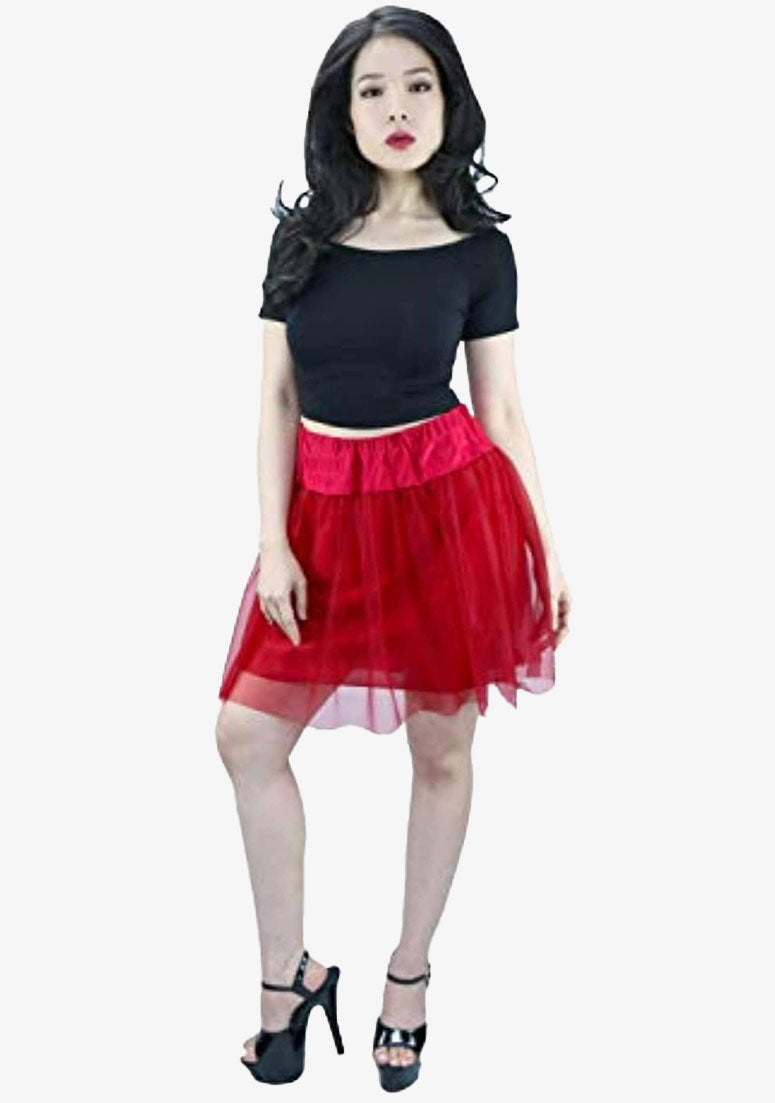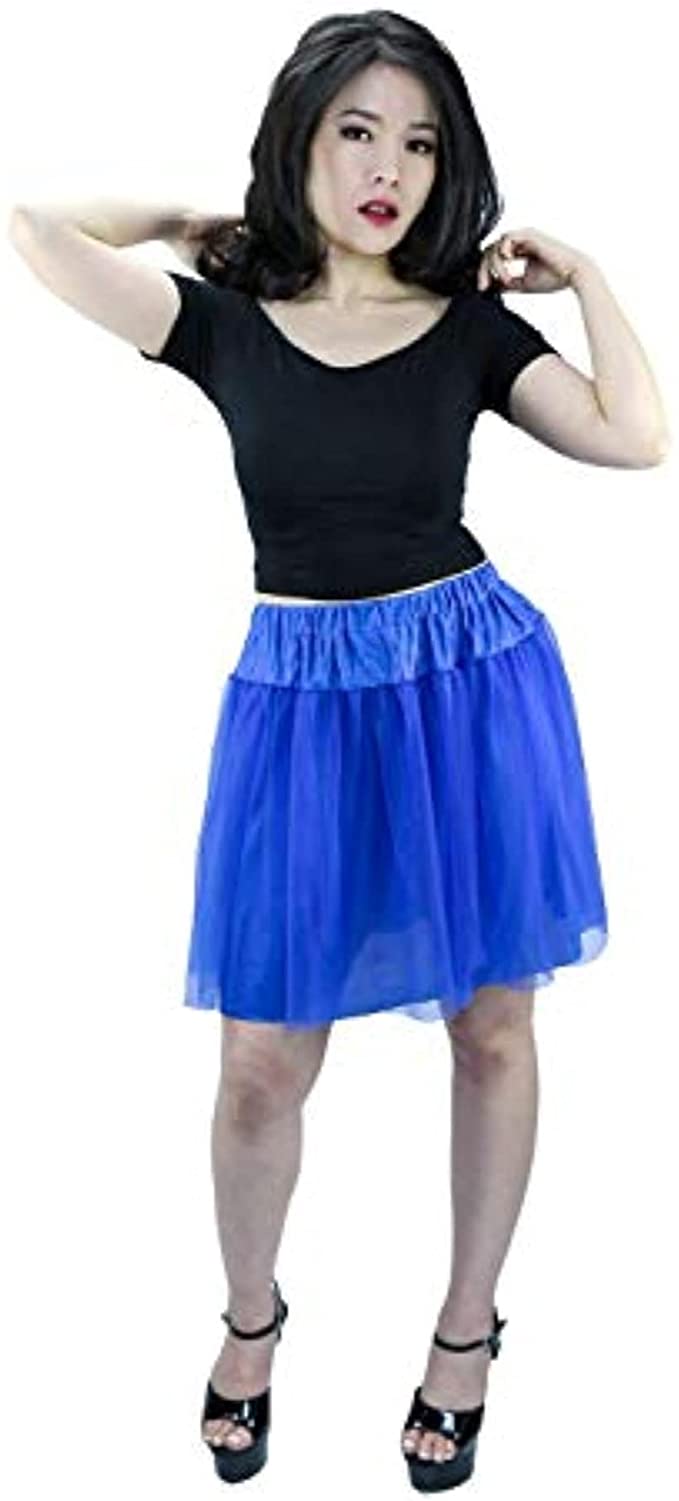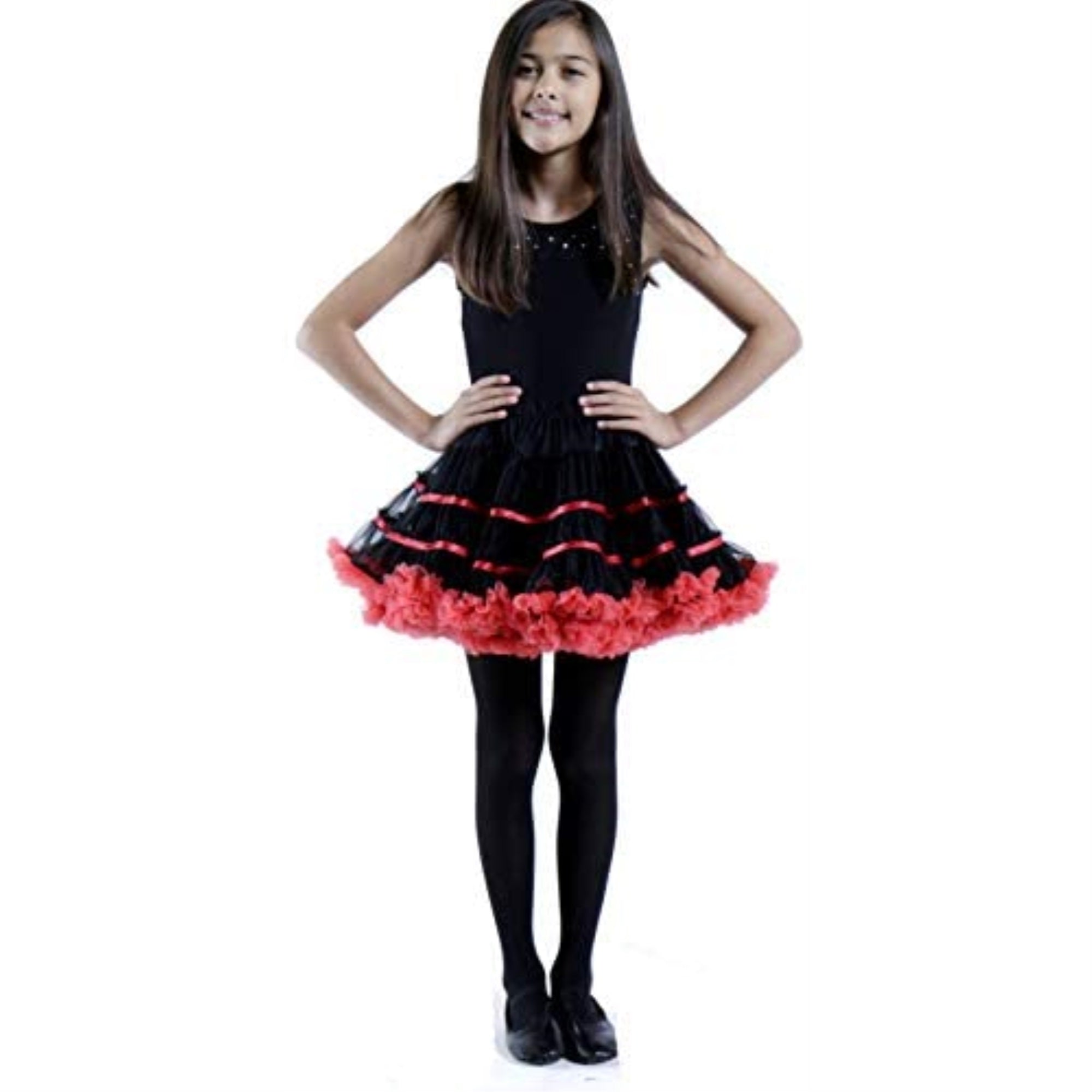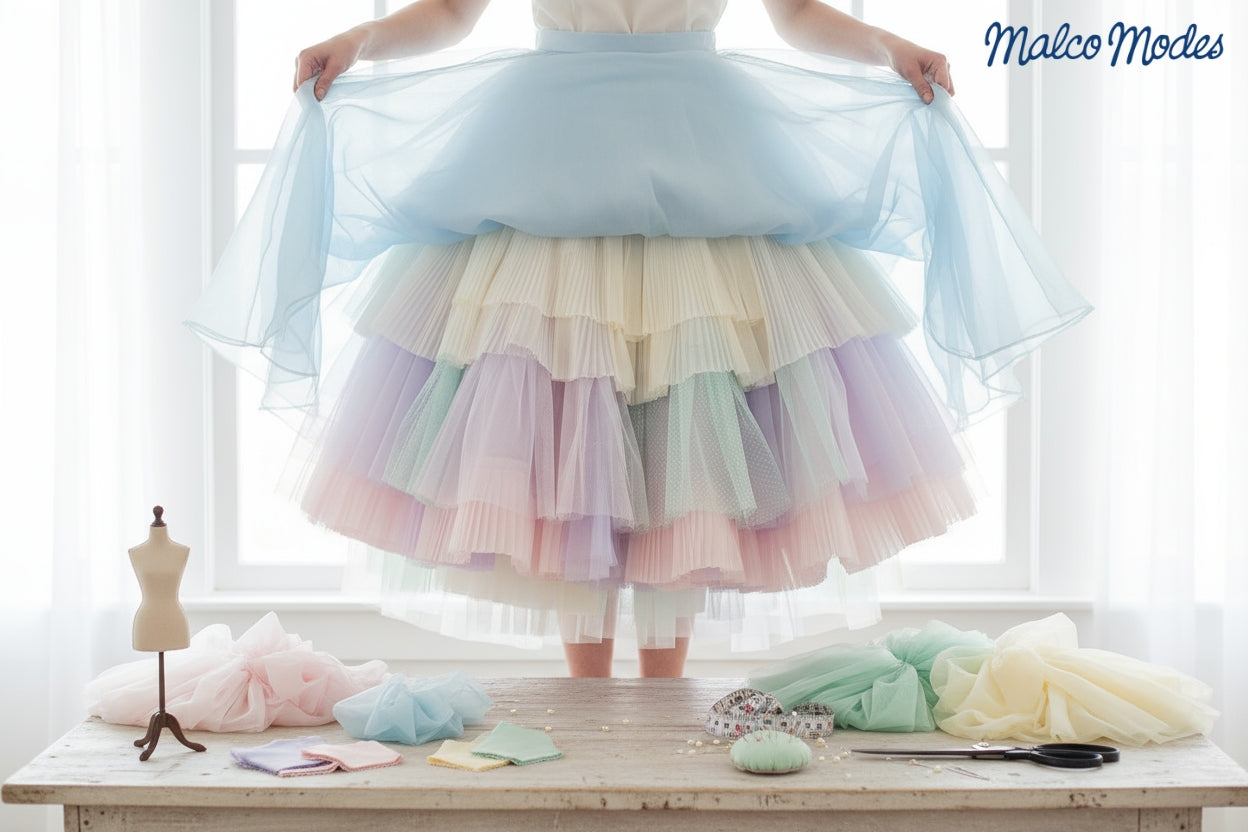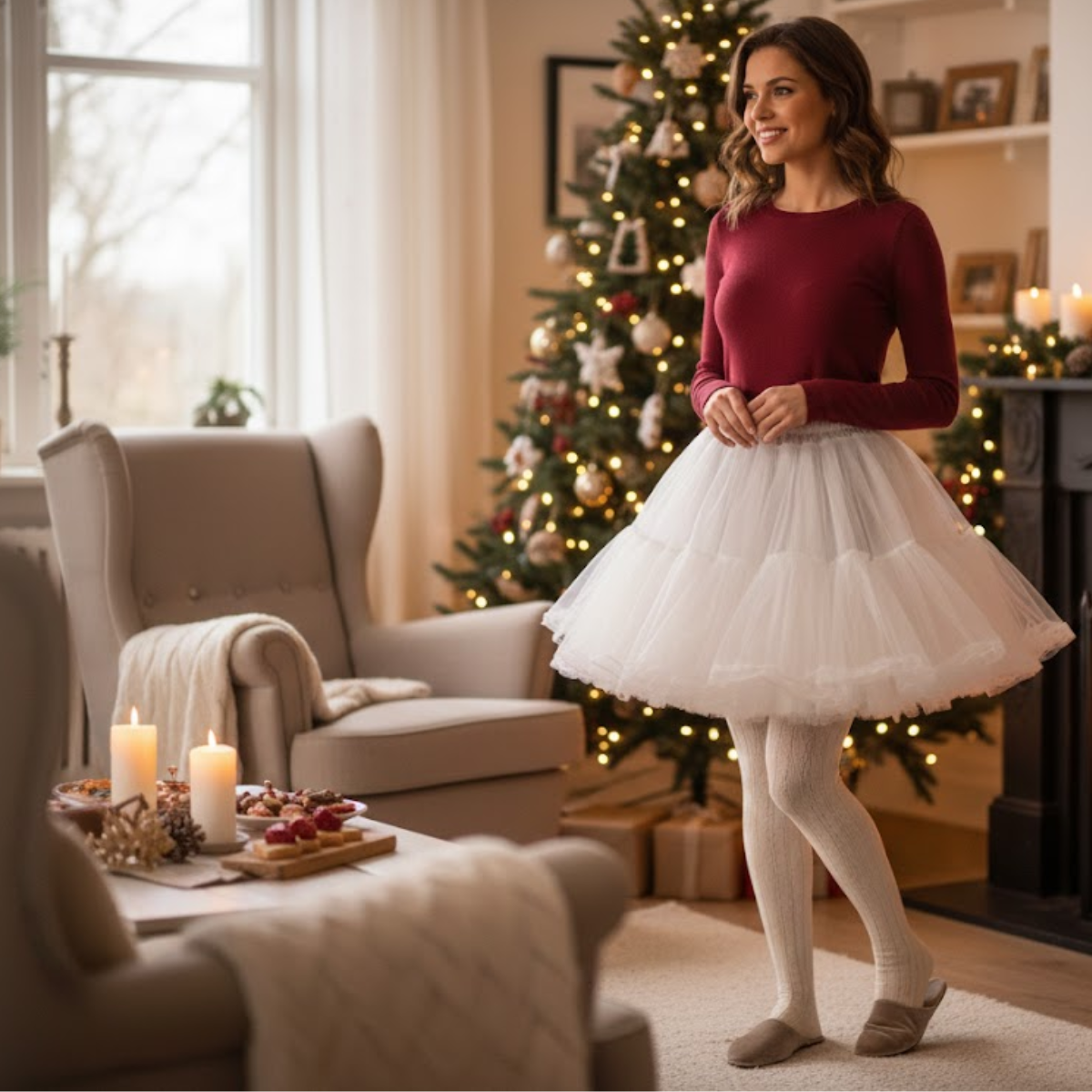How to Make Skirts Poofy and Stylish: Tips, Petticoat Fabrics, and Sewing Hacks
Discover the secrets to achieving the perfect poofy skirt look with expert styling tips, fabric choices, starching techniques, and easy DIY hacks that bring volume and flair to your wardrobe!
Key takeaways
- Use lightweight layered fabrics like tulle, organdy, and muslin for volume and comfort.
- Starch petticoats to add crispness and prevent shifting.
- Employ no-sew hacks and layering tricks for quick poofy skirt transformations.
- Handle specialty fabrics such as organza and taffeta carefully for professional results.
- Balance voluminous skirts with fitted tops and statement belts for flattering style.
Table of contents
- How to Make Skirts Poofy: Styling Tips and Fabric Tricks
- Best Petticoat Fabrics for Volume and Comfort
- Starching Petticoats: Unlocking Crisp Volume
- Sewing Tips for Specialty Fabrics in Skirts and Petticoats
- DIY No-Sew and Easy Skirt Alterations
- Historical Costume Petticoats: Layering for Authentic Silhouettes
- Seasonal Styling: Wearing Poofy Skirts Year-Round
- Conclusion: Mastering the Art of Poofy Skirts and Petticoats
How to Make Skirts Poofy: Styling Tips and Fabric Tricks
A poofy skirt captures attention, creates movement, and flatters many body types by emphasizing the waist and creating an hourglass silhouette. Here’s how to maximize volume and style your skirts for the perfect poof:
Fabrics That Add Volume
- Tulle and Organza: These lightweight, stiff netting or sheer fabrics create instant volume without weighing down the skirt. Multiple layers of tulle give that classic tutu effect. For more on tulle fabrics, check out our article on What Are Tutus Made Of? Exploring Fabrics and Materials.
- Crinolines and Petticoats: Adding petticoats underneath your skirt provides structure and fullness. Crinoline fabric, a starched netting, can give dramatic lift. Learn more in our Types of Petticoats: Choosing the Perfect Layer for Your Dress.
- Fabric Stiffeners: Spray-on or wash-in fabric stiffeners can make softer fabrics like cotton or polyester stand up more, adding poof without needing extra layers.
Layering Skirts
- Layer several skirts of different lengths and textures to build poof and depth.
- Adding ruffles or floral embellishments on layers adds dimension and visual interest.
Styling for Balance
- Wear fitted tops or bodices paired with your poofy skirt to balance the volume and emphasize your waistline.
- Statement belts cinch the waist further and complement the skirt’s fullness. For tips on choosing the perfect belt, check out Women's Belts: How to Choose the Perfect Belt for Dresses and Elevate Your Style.
Quick No-Sew Poof Hacks
- Use safety pins or belts inside out to temporarily shrink or add shape to existing skirts.
- Upcycle old jeans or pants by cutting and hemming them into skirts or mini skirts for affordable, playful options.
For more ideas on no-sew mini skirt hacks and layering, these tips offer creative and budget-friendly ways to experiment with volume and style.

Best Petticoat Fabrics for Volume and Comfort
Creating a poofy skirt often requires a good petticoat, and fabric choice makes all the difference—not just for volume but also for comfort and wearability. Here are some top fabrics to consider:
1. Muslin and Calico (Cotton Fabrics)
- Lightweight and breathable, muslin provides the ideal base layer.
- Durable with an even weave, making it suitable for multiple layers without adding heaviness.
- Historical costumers rely on muslin for authenticity and comfort. Refer to our guide on The Timeless Elegance of Petticoats.
2. Organdy
- A starched, plain-weave cotton fabric prized for its stiffness and lightweight feel.
- Often used for corded petticoats or top ruffle layers due to its crisp body.
- Its stiffness allows skirts to hold shape beautifully without adding bulk.
3. Linen and Cambric
- Linen versions with lighter, tighter weaves or blends (cambric) are good alternatives.
- Linen offers natural durability and smooth finish when starched properly.
- Great for adding warmth when layered under lighter fabrics.
4. Silk and Faux Silk
- Historically elegant, silk organza or China silk creates refined volume.
- Today, faux silks provide a cost-effective substitute with a similar sheen.
- More delicate fabrics but ideal when luxury and smooth finishes are desired.
5. Taffeta
- Crisp and rustling, taffeta can add structure but requires careful handling.
- It frays easily, so seam finishing is crucial.
- Often used for formal skirts or dramatic petticoats.
6. Burlap
- Mostly decorative or theatrical; rough texture and shedding make it impractical for everyday wear.
- Pre-washing and careful handling needed if used.
Starching Petticoats: Unlocking Crisp Volume
Starch is a secret weapon in the world of petticoats. Applying starch to fabrics like cotton and organdy helps maintain a firm, crisp shape essential for volume.
Why Starch Your Petticoat?
- Prevents the petticoat from riding up and “climbing” the legs during movement.
- Adds body and stiffness to naturally soft fabrics.
- Creates a smooth, polished silhouette.
Best Practices for Starching
- Dip starching (immersing the fabric into a starch solution) is preferred for even stiffness and durability.
- Machine starch sprays are convenient but may provide less lasting stiffness.
- Ironing the fabric after starching sets the finish and enhances crispness.
- Starching also helps fabric layers hold together when using multiple petticoats.
Ruffles integrated into the petticoat add extra volume, but applying starch to the base layers is equally important to support the overall structure.
Sewing Tips for Specialty Fabrics in Skirts and Petticoats
Many poofy skirts and petticoats include specialty fabrics that can be tricky to sew if you’re not prepared. Here’s essential advice for working with the most popular materials:
Tulle and Netting
- What It Is: Lightweight mesh fabric perfect for volume under skirts, tutus, and accents.
-
Handling Tips:
- Use flat-headed pins or clips to avoid snagging.
- Avoid marking pens; use thread tacks or removable tape for markings.
- No edge finishing needed as tulle doesn’t unravel.
-
Sewing Tips:
- Use a straight stitch with a fine needle.
- Gathering is easily done with machine basting stitches.
- Finishing: Edges can be finished with fishing line hems for a flouncy look.
Organza
- What It Is: Sheer, stiff, and crisp; ideal for formal petticoats and overlays.
-
Handling Tips:
- Use a flannel backing or cutting mat for accurate cutting to prevent slipping.
- Use sharp scissors or rotary cutters.
- Mark with thread tacks, avoid pens that stain or damage.
-
Sewing Tips:
- Sew with taut but gentle tension to minimize puckering.
- Use small needles to avoid holes.
- Stabilize seams with tissue paper if needed.
- Hem with rolled hems or French seams for elegant finishes.
Taffeta
- What It Is: Crisp fabric with a slight rustle, used in costumes and formalwear.
-
Handling Tips:
- Avoid pins in bodies of fabric—pin only in seam allowances.
- Use a pressing cloth when ironing to avoid marks.
-
Sewing Tips:
- Use delicate needles and a taut sewing technique.
- Serge seams for durability.
- Reinforce hems with horsehair braid for structure.
Burlap
- What It Is: Rough, rustic fabric mainly for decorative or theatrical use.
-
Handling Tips:
- Pre-wash to soften and reduce odor.
- Anticipate lots of shedding; clean the sewing area frequently.
-
Sewing Tips:
- Use zigzag stitching to prevent raveling.
- Consider seam sealants like Fray Check for edge finishing.
- Layer burlap over underfabric to reduce friction and static.
DIY No-Sew and Easy Skirt Alterations
Don’t let a lack of sewing skills stop you from creating poofy skirt magic! Try these no-sew hacks to transform your skirts quickly and affordably:
Waist Adjustment Hacks
- Turn your skirt inside out and use safety pins to take in the waist discreetly.
- Use wide statement belts to cinch and reshape loose skirts for a flattering silhouette.
Quick Mini Skirt Transformations
- Cut old jeans or pants into mini skirts, finishing the edge with fabric glue or adhesive stabilizers.
- Repurpose T-shirts or thrifted fabrics into layered mini petticoats with fabric stiffeners for instant flounce.
Upcycling and Layering
- Layer thrifted skirts or inexpensive lightweight fabrics to add poof without investing in new garments.
- Add floral appliques or lace trims to existing skirts to boost volume and charm.
Historical Costume Petticoats: Layering for Authentic Silhouettes
For historical reenactors and lovers of vintage fashion, petticoats are indispensable in achieving those iconic full skirts of the 19th and early 20th centuries.
Key Elements of Historical Petticoats
- Multiple layers of lightweight cotton muslin or calico for comfort and volume.
- Starch treatments to provide crispness and maintain the shape throughout wear.
- Use of organdy or silk ruffles to accentuate hems and create a finished look.
- Inclusion of crinoline or corded structures underneath for added support.
Practical Tips for Costume Makers
- Opt for lightweight fabrics to avoid heavy, uncomfortable garments.
- Use thrifted sheets or cotton tablecloths as budget-friendly fabric sources.
- Starch consistently and evenly to avoid petticoat climbing and maintain silhouette.
Seasonal Styling: Wearing Poofy Skirts Year-Round
Poofy skirts aren’t just for spring and summer. With the right fabrics and layering techniques, they can be worn stylishly all year long.
Winter-Ready Fabrics and Tips
- Choose thicker bases like wool blend petticoats underneath cotton or linen layers for warmth.
- Pair with fleece-lined tights or leggings for cozy legs without compromising style.
- Layer skirts of different lengths to trap warm air and create a chic, voluminous look.
Transitional Fabrics
- Use organza or taffeta for mid-weight skirts that transition well between seasons.
- Add statement boots and fitted sweaters for balanced, weather-appropriate outfits.
Conclusion: Mastering the Art of Poofy Skirts and Petticoats
Whether you’re diving into DIY fashion hacks, sewing intricate historical costumes, or just want to add fun volume to your everyday outfits, understanding how to make skirts poofy is about blending the right fabrics, clever construction, and styling know-how.
Remember these key points for success:
- Use multiple lightweight layers like muslin, organdy, and tulle for comfortable volume.
- Apply starch to achieve crispness and prevent shifting or climbing petticoats.
- Handle delicate specialty fabrics like organza and taffeta with care to avoid puckers and tears.
- Embrace no-sew hacks and fabric glue for quick transformation.
- Balance your poofy skirt with fitted tops and belts for a flattering silhouette.
With these tips and tricks in your fashion toolkit, you’re ready to create, style, and own delightful poofy skirts that turn heads and spark joy. Get out there and have fun!
"A poofy skirt isn’t just clothing — it’s a bold statement. Master the art and let your style bloom!"
If you want to explore more about petticoats, sewing specialty fabrics, and creative fashion hacks, the resources linked throughout this article are great next steps. Start experimenting today and enjoy the poof!


